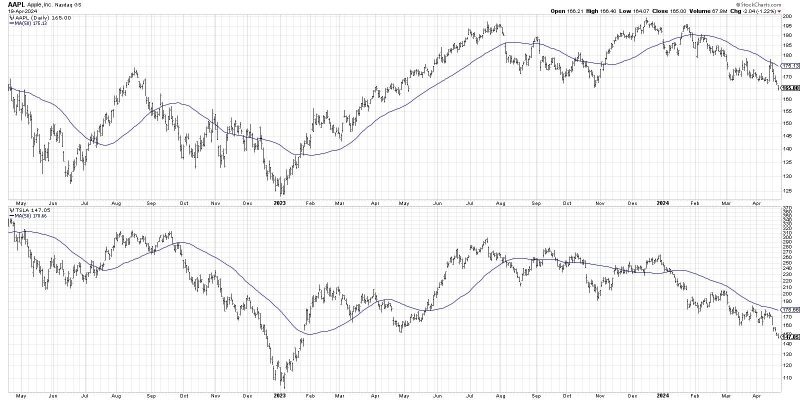Market movements in recent years have witnessed an overreliance on mega-cap growth stocks, typified by big names in the technology industry such as Facebook, Apple, Amazon, Netflix, and Google, otherwise known as the FAANG block. However, several indications signal a breakdown in these stocks, confirming a bear phase in the market.
Firstly, a critical sign has been the relative underperformance of these mega-cap growth stocks compared to other sectors. Traditionally, these stocks have driven market returns, peaking higher during bull markets and providing a safety net in bear markets. However, this pattern seems to be deviating as sectors like energy, finance, and industrials are outpacing the tech-heavy growth stocks.
Secondly, it’s worth noting the widespread sell-offs that are rippling through the technology industry. The sell-offs suggest an investors’ shift toward more value-oriented sectors, which are likely to weather the volatility better. Globally, investors are becoming wary of the inflated valuations of tech stocks, aggravated by the ongoing pandemic and a potential rise in interest rates.
A third indication of the bear phase is the shift from ‘growth’ to ‘value’. The terms in quotes refer to investment styles with ‘growth’ implying betting on companies expected to grow at an above-average rate compared to other companies, and ‘value’ implying investing in stocks trading for less than their intrinsic values. More often, during periods of increased economic uncertainty, the ‘value’ strategy tends to outperform the ‘growth’ strategy causing investors to flock towards the former – as evidenced in the current market scenario.
Coupled with these signs, changes in fiscal and monetary policies imply a tightening economic climate. Particularly in the United States, the Federal Reserve has signaled interest rate hikes and reduction in asset purchases to combat inflation. These moves, coupled with a potential increase in corporate taxes, could strangle growth and trigger a bear market.
Additionally, empirical evidence shows a historical shift in market trends every decade or so, referred to as ‘market rotation’. This shift gravitates away from the dominant market trend of a given decade. In the past decade, mega-cap growth stocks dominated the market trends, and these trends are due for change, further affirming the onset of a bear phase.
Lastly, market sentiment plays a pivotal role in indicating the market phase. The current sentiment depicts a sense of worry and pessimism among investors, driven by fears ranging from inflation to new variant strains of COVID-19, and geopolitical issues – all of these together catalyze a market dip.
In conclusion, while it’s important to monitor the signs, it’s also crucial to remember that the market is fluid and ever-changing. A phase of bear markets (where the prices of securities are falling) could soon be followed by bull markets (where the prices are rising). Market dips can be seen as investment opportunities. Investors just need to be cautious, informed, and proactive in adjusting their strategies in light of the ever-changing market conditions. In the end, the risk lies not in the volatility of the market, but in how one chooses to navigate it.




